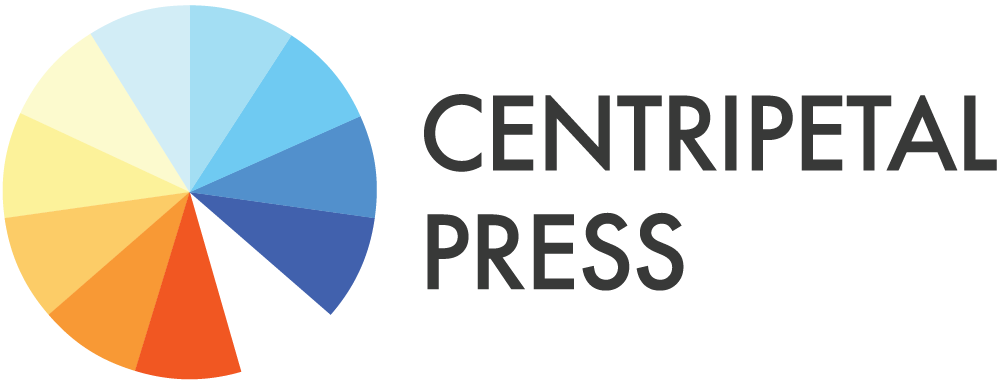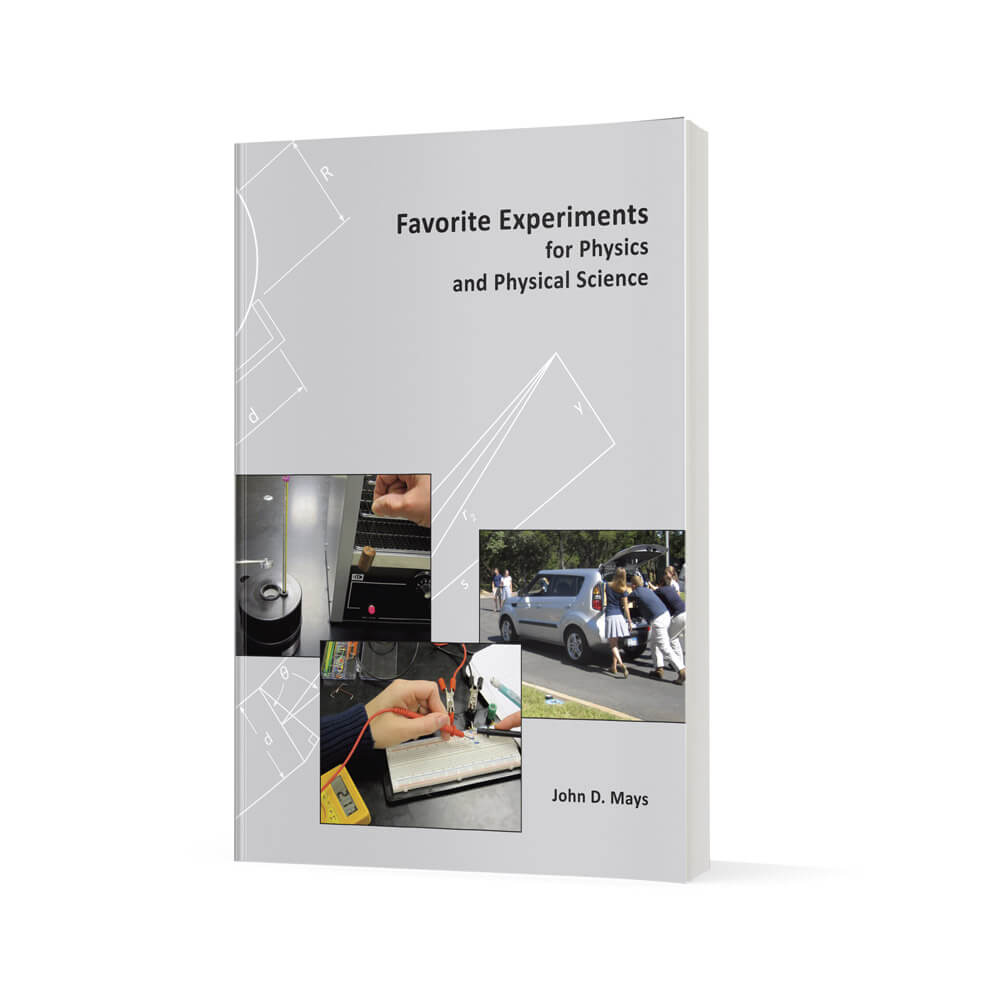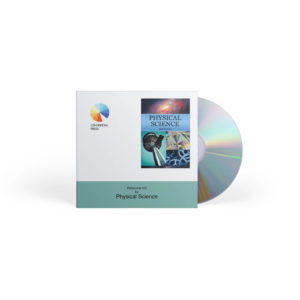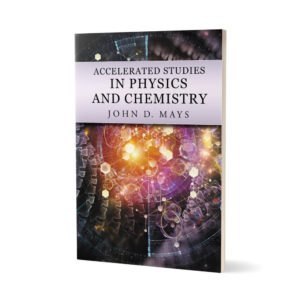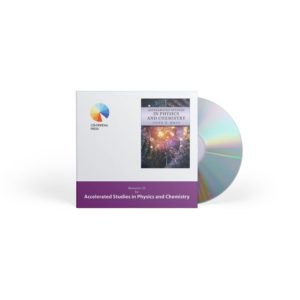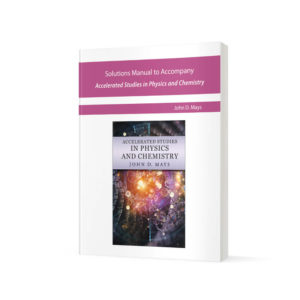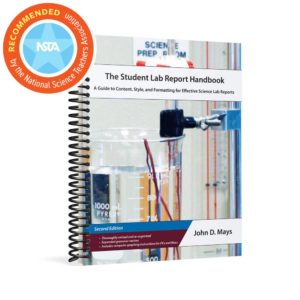Favorite Experiments in Physics and Physical Science
All experiments for Centripetal Press physics and physical science texts, plus over 50 demonstrations. A new collection of experiments and demonstrations to bring fresh vigor and real science learning into your classroom. Included are complete descriptions of eleven separate student experiments to accompany Centripetal Press texts.
ISBN 978-0-9883228-0-6
Description
** Note: This book is produced by print-on-demand service and may take 2-4 weeks to ship.
View Errata | View Tips and Tools
Given “Recommended” status by the NSTA, this new collection of favorite experiments and demonstrations brings fresh vigor and real science learning into your classroom. Included are complete descriptions of 11 student experiments to accompany Centripetal Press texts and over 50 demonstrations in physics and introductory chemistry.
Frustrated with a “magic show” mentality in your lab experiments? Everyone agrees that experiments are necessary. But if they are going to be worth the time, they must be carefully designed to educate students in principles of lab procedures, measurement, observation, recording, and analysis.
Favorite Experiments accomplishes this by starting each experiment with clear learning objectives followed by an explanation of the experiment and why we are doing it. The materials list includes source information (such as Flinn Scientific or the local hardware store) with part or model numbers where applicable.
Wherever possible, we strive to keep costs down. Ordinary household items can often serve just fine in an experiment (remember, the great pioneer scientists always designed their own experiments). But a student must also learn to use and understand real laboratory equipment; we don’t want them arriving at their college labs having never handled a beaker or worn safety equipment. Our experiments strive to create a real science lab environment at a minimum of cost.

Chapters go on to a list of pre-lab discussion questions and talking points, notes for student preparation, and student instructions for conducting the experiment. Instructions include useful guidelines such as avoiding pitfalls, taking accurate measurements, and incorporating everyone in the group to help with some aspect of the experiment. Where safety concerns exist, this book gives clear instructions and prescribes standard lab safety procedures and equipment.
Then after the experiment, students need to experience real-world science by thinking about clean-up and disposal procedures (you can’t just pour chemical waste down the sink) and analysis of data.
Centripetal Press believes strongly that students from 9th grade on should write a formal lab report after an experiment. The Student Lab Report Handbook is the perfect student guide to preparing premier lab reports on a computer.
Favorite Experiments contains all the information needed for the experiments in Novare textbooks Accelerated Studies in Physics and Chemistry, Introductory Principles in Physics, and the forthcoming advanced physics text Physics: Modeling Nature. Also included are more than 50 demonstrations that can be performed by an instructor. The basic student instructions are included in each textbook or can be photocopied and distributed. Student Instructions are also available for FREE DOWNLOAD in PDF format from this website. The password is on p. 5 of the book, or contact info@centripetalpress.com.
Note: the book is not designed to compliment our middle school text, Physical Science.
Experiments in Introductory Principles in Physics
- The Pendulum Lab: experimental methods and procedures
- The Soul of Motion: Newton’s second law of motion
- The Hot Wheels Lab: conservation of energy
- DC Circuits: DC circuits and the use of electronic test equipment
- The Density Lab: accurately determining density with correct lab technique and computer-based analysis
Experiments in Accelerated Studies in Physics and Chemistry (ASPC)
The above experiments, plus:
- The Solubility Lab: determining solubility and the effect of temperature on solubility
Demonstrations for 9th Grade Physics and Physical Science
- Retrograde Motion
- What is an Ellipse?
- Newton’s 3rd Law
- Charles’ Law
- Gravitational Potential Energy and Kinetic Energy
- Work
- Conservation of Momentum
- Refraction
- Diffraction and Interference
- Interference
- Resonance
- Frequencies of Sound
- Loudness of Sound
- Harmonics and Timbre
- Setting Up Your Lab for Sound Demonstrations
- Electrochemistry
- Static Electricity
- Magnetic Fields
- Ampere’s Law
- Faraday’s Law of Magnetic Induction
- Motors
- Generators
- Synthesis and Activation Energy: Burning Magnesium
- Single Replacement and Synthesis: Hydrogen Production 1
- Double Replacement and Decomposition: Baking Soda and Vinegar
- Single Replacement and Synthesis: Hydrogen Production 2
- Single Replacement and Synthesis: Hydrogen Production 3
- Collision Theory and Activation Energy: Exploding Coffee Creamer
Experiments for Advanced Physics
- Bulls Eye Lab: use vector-based equations for two-dimensional projectile motion to make predictions
- The Friction Challenge: design methods to produce accurate and precise measurements of static and kinetic coefficients of friction and implement these methods to measure brass-on-brass contact under dry and lubricated conditions
- Rotational Kinetic Energy: use energy equations to predict translational velocity of a solid steel ball after it rolls to the bottom of a ramp, and compare prediction to experimental results
- Calorimetry: determine specific heat capacity of copper using the techniques of calorimetry and theory of heat transfer
- Sound Lab: use the theory of inverse square variation and logarithms to make quantitative predictions about decibels and sound pressure level of a piezo siren at various distances
Demonstrations in Advanced Physics
- Projectile Motion: The Monkey and the Hunter
- Torque: The Magic Belt on Hook
- Moment of Inertia: Rolling Ring and Disk on Ramp
- Centripetal Force: Whirling Ball on a String
- Conservation of Angular Momentum: Spinning Stool and Weights
- Pressure and Density: Cartesian Diver
- Pressure and Density: U-Tube Manometer
- Pressure and Hydraulics: Miniature Floor Jack
- Pressure and Bernoulli’s Equation: Bernoulli Paper
- Atmospheric Pressure and Sound
- Pressure and Phase Transitions: Boiling Water at Room Temperature
- Pressure and Phase Transitions: Pressure-Induced Freezing
- Thermodynamics: Drinking Bird
- Thermodynamics: Fire Syringe
- Thermodynamics: CO2 Water Bottle
- RC Circuits: Charging Capacitor
- Waves and Light: Interference and the Grating Equation
- Waves and Light: CD Track Pitch and the Grating Equation
- Light Polarization: Crossed Polaroid Films
